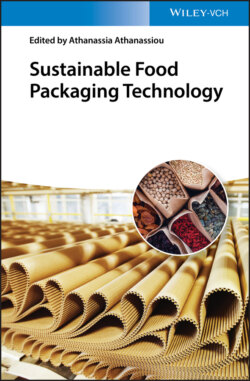Читать книгу Sustainable Food Packaging Technology - Группа авторов - Страница 23
1.3.8 Poly(ɛ‐caprolactone)
ОглавлениеPoly(ɛ‐caprolactone) (PCL) is a biodegradable aliphatic polyester derived from the chemical synthesis of crude petroleum [91]. It is obtained from ROP of ɛ‐caprolactone in presence of metal alkoxides and also through the polycondensation of 6‐hydroxyhexanoic acid. PCL is commercially available under the trade names CAPA (Solvay, Belgium), Tone (Union Carbide, USA), Celgreen (Daicel, Japan), and many others [92].
Some features of PCL include biodegradability, good solubility, flexibility, low Tm (approximately 60 °C) and a Tg of around −60 °C, and easy processing. PCL is used in flexible packaging materials in the form of films or coatings for extending the shelf life of food products. However, due to its high price and long biodegradability cycles, PCL is commonly blended with other biopolymers, such as chitosan and starch [93]. Among them, starch has been proposed as a reinforcing agent to improve the mechanical strength of PCL [94]. There are also several studies on the hydrolysis and biodegradability of PCL. The degradation process of PCL takes place through hydrolysis, thereby leading to molecular fragmentation or chain scission [94]. Moreover, enzymes and fungi easily biodegrade PCL. However, to improve the degradation rate, several copolymers with lactide or glycoside have been developed [94].
